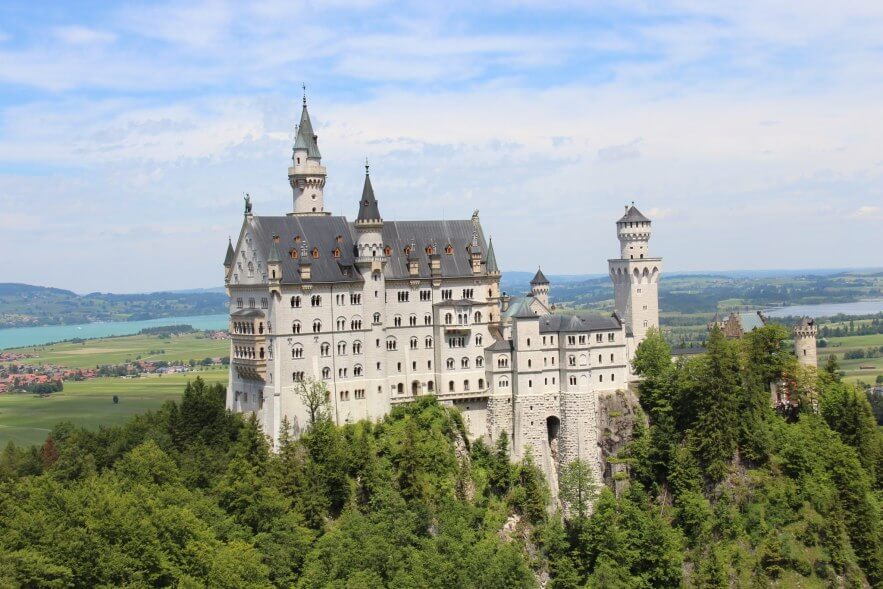LAUFEN — A gritty, damp lump of clay is spread in layer after layer into a form before being pressed and dried. The architectural firm Herzog & de Meuron constructed a new building for the company Ricola using this ancestral technique.
The enigmatic structure stands in a field on the outskirts of Laufen, in the Swiss canton of Basel-Landschaft. It's "made with the earth on which it is located" and "echoes its environment," says architect Pierre de Meuron.
The material used for the facade comes from a radius of just eight to 10 kilometers around the site. But the market building, finished in 2014 and designed for the transformation of the herbs that make the Ricola cough drops and breath mints, is also impressive for its dimensions: more than 100 meters (328 feet) long, 30 meters (98 feet) wide and 11 meters (36 feet) high. This imposing size makes it the largest rammed-earth construction in Europe.
Still used in developing countries, mudbrick disappeared from Swiss construction about a century ago, replaced by industrialization and the advent of new materials such as cement. To revive this forgotten savoir-faire, Jacques Herzog and Pierre de Meuron called on Austrian Martin Rauch, who positions himself as the revival leader of clay construction in Europe and has brought back into fashion vernacular architecture techniques — that is to say, construction based solely on the knowledge built up over generations and without a project manager or architect.
He has participated in building about 20 other public and private buildings in Switzerland, including the amazing Cinema Sil Plaz and the Swiss Ornithological Institute's visitors center in Sempach. The other knowledge hub for mudbrick construction, the CRAterre research center, is in Grenoble, France, which is no coincidence. The Rhone basin is one of the historic cradles of clay buildings and still has many rammed-earth farms from the 19th century.
Aesthetically and environmentally friendly
Renewed interest among architects for mudbrick is thanks in large part to the material's aesthetic qualities. Pierre Frey, an honorary architecture professor at the Swiss Federal Institute of Technology in Lausanne and author of the book Learning from Vernacular, notes the great softness of the Ricola building. "It draws attention and arouses emotions," he says. "Some materials keep you away. Others, like wood or clay, make you want to touch them."
But this renewal is mostly part of a school of thought linked to the environment. "We are observing awareness of the limited nature of certain resources," Pierre Frey says. Natural materials such as wood, straw, flax, hemp and even cellulose are used increasingly in construction but also as insulating material or coating.
In Geneva, architect Laurent de Wurstemberger and engineer Rodrigo Fernandez put respect for the environment at the center of their work. Their start-up Terrabloc, founded in 2011, recycles construction site rubble to produce mudbrick. "In Geneva alone, more than one million cubic meters of earthy rubble are excavated and transported to landfill sites each year," says Fernandez.
Return to simplicity
The prefabricated elements of Terrabloc are used to construct siding walls, load-bearing walls and interior walls. After three major jobs in the canton of Geneva, the young company now has projects in Switzerland's Romandy.
Terrabloc selects the earth of the region's construction sites according to its quality, then transports it to the town of Gland, where it is cleared of stones, sorted, beaten and stabilized with 5% cement "to avoid erosion and turn it into a sustainable material." The mix is then compressed in a hydraulic press. The last step, maturation of the block, lasts 30 days.
"Only the pressing requires electricity," Fernandez explains. "Compared to the production of terracotta bricks, we use five to six times less energy." Of course, this process, which requires a lot of work, has a cost: 30% more than the standard products available on the market.
The qualities of mudbrick are not limited to its local availability and its low impact on the environment. It also acts as a natural humidity and heat regulator (clay easily absorbs water and returns it according to the humidity of the room), and has appealing acoustic insulation properties for both high and low frequencies.
"We live in thermoses run by machines," Laurent de Wurstemberger says. "In order to meet today's labels and demands, construction is becoming more and more complicated. We are focused on the energy consumption of buildings without worrying about their constituent material. Returning to a certain simplicity and modesty sometimes leads to surprising results. In this regard, resorting to mudbrick can become a preferable solution."






